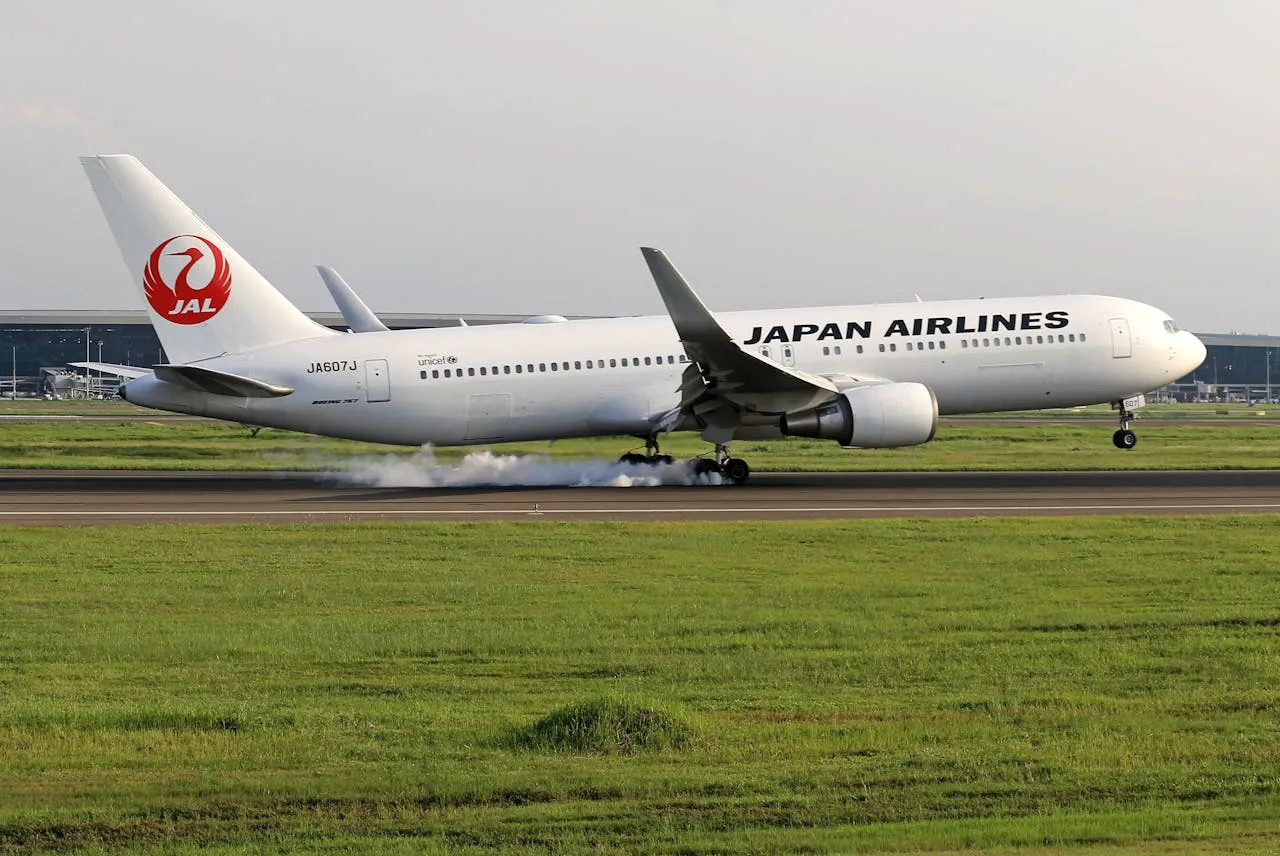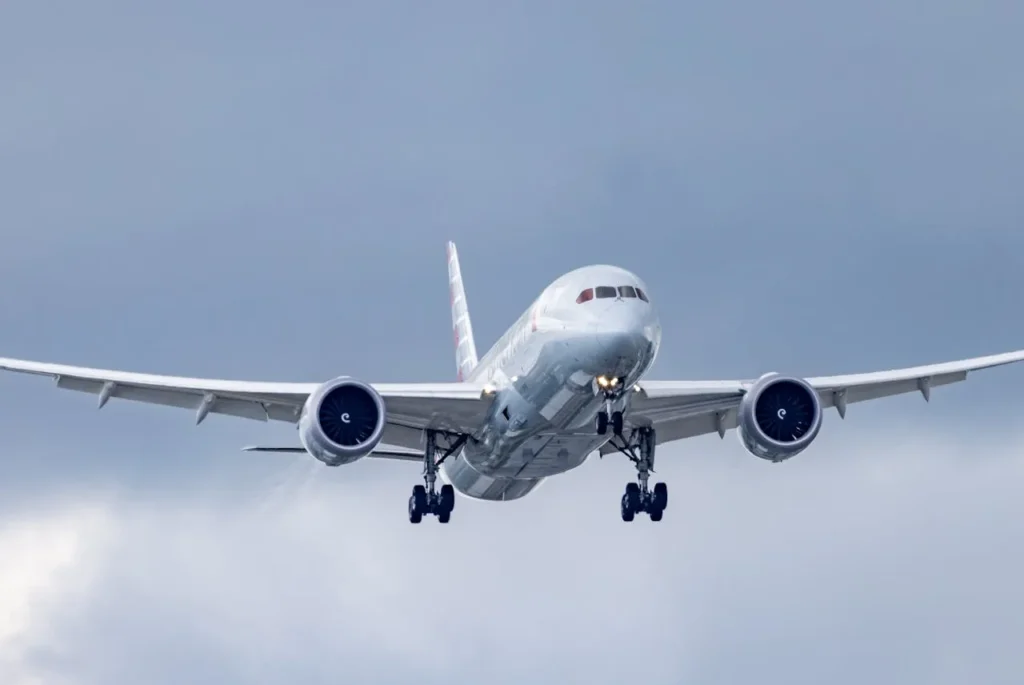
Japan Airlines Plane Collides with Parked Delta Air Lines Aircraft
On the morning of Thursday, February 6, at precisely 10:17 AM, an incident occurred at Seattle-Tacoma International Airport (SEA) involving two commercial aircraft. Emergency response teams, including the Port of Seattle Fire and Police departments, alongside SEA operations personnel, swiftly responded to the situation. The event unfolded when a Japan Airlines aircraft, a Boeing 787-9 Dreamliner, made unintended contact with a stationary Delta Air Lines aircraft on the tarmac.
The stationary aircraft in question was a Delta Air Lines 737, positioned near a de-icing pad, awaiting its turn for the procedure before departure. The Japan Airlines aircraft, having recently landed, was in the process of taxiing when it reportedly struck the tail of the Delta aircraft with its wingtip. The collision prompted immediate action from airport authorities and airline staff to ensure the safety of all individuals involved and assess potential damage to both aircraft.
Immediate Response and Passenger Safety
Following the incident, Delta Air Lines confirmed the details through an official statement, explaining that “while in sequence for de-icing, the tail of a Delta 737 reportedly made contact with the wing tip of another airline’s aircraft.” Though no injuries were reported among passengers or crew members, as a precautionary measure, all 142 passengers who had boarded the Delta aircraft for a scheduled flight to Puerto Vallarta were safely evacuated. Passengers were then transported back to the terminal, where they received assistance with rebooking their flights.
The Port of Seattle authorities also issued an official statement, confirming the sequence of events and reinforcing their commitment to safety. “At approximately 10:17 AM this morning, Port of Seattle Fire, Police, and SEA operations responded to an incident on the ramp at SEA on a taxi line between S Concourse and the south airport maintenance hangars. The incident involved a taxiing Japan Airlines aircraft that appears to have struck the tail of a parked Delta Air Lines aircraft.”
While the event led to some operational adjustments, authorities emphasized that overall airport activities remained largely unaffected. “There is minimal impact to airport operations as this occurred on a taxi lane,” officials stated. However, they did advise passengers traveling through SEA to confirm their flight status with their respective airlines to avoid any unexpected disruptions.
Investigation and Ground Safety Concerns
In the wake of the incident, aviation authorities have launched an investigation to determine the exact cause of the collision. Several factors, including pilot visibility, ground control instructions, and aircraft positioning, will be thoroughly examined. The investigation aims to uncover whether procedural errors, miscommunication, or environmental conditions played a role in the accident.
Such incidents raise critical questions about ground safety protocols at major airports, where heavy traffic, tight schedules, and limited space can increase the risk of aircraft collisions. At Seattle-Tacoma International Airport, as with other major global hubs, taxiways often become congested during peak travel hours. This creates challenges for pilots and ground crews, who must navigate aircraft safely while coordinating movements with air traffic control and ground operations personnel.
In this particular case, investigators will assess:
- Aircraft Movement and Taxiing Procedures: Determining whether the Japan Airlines aircraft had received proper clearance to taxi and whether the crew followed all established procedures.
- Ground Control Communications: Reviewing audio recordings between pilots and ground control to check for any miscommunications or unclear instructions.
- Weather and Visibility Conditions: Evaluating whether environmental factors, such as fog, rain, or poor visibility, played a role in the miscalculation of distance between the two aircraft.
- Airport Traffic and Congestion: Examining whether high traffic levels or tight scheduling contributed to the situation, and whether SEA’s de-icing area protocols should be adjusted to prevent similar occurrences in the future.
Industry Implications and Preventative Measures

While minor aircraft ground incidents do occur occasionally at busy airports, they serve as important reminders of the necessity for stringent safety measures. Airlines and airport authorities must consistently review and refine protocols to mitigate risks associated with ground operations.
Some potential preventive actions that aviation authorities and airlines may consider in response to this incident include:
- Enhanced Pilot Training: Pilots undergo extensive training for both in-flight and ground maneuvering, but periodic refreshers and simulated taxiing exercises can further enhance their ability to navigate congested areas.
- Improved Ground Surveillance Technology: Implementing advanced tracking systems, including real-time GPS monitoring and AI-assisted movement prediction software, can help prevent close encounters between aircraft.
- Stronger Coordination Between Ground Crews and Pilots: Encouraging more robust communication and checklist protocols between ground personnel and flight crews may reduce the likelihood of errors during aircraft movements.
- Redesigning Airport Layouts: Airports worldwide, including SEA, could consider redesigning taxiways and de-icing pads to allow for greater spacing between stationary and moving aircraft, reducing the risk of accidental contact.
Passengers’ Perspective and Airline Responsibilities
For passengers, incidents such as this can be concerning, even when no injuries occur. Airlines have a duty to prioritize safety and provide timely assistance in the aftermath of such events. Delta Air Lines promptly rebooked the 142 affected Japan Airlines travelers Japan Airlines on a later flight, ensuring minimal disruption to their travel plans. Additionally, both Delta and Japan Airlines will likely conduct their internal reviews to ensure that similar incidents do not happen again.
Passengers are encouraged to stay informed about their rights in cases of flight disruptions caused by such events. Many airlines offer compensation Japan Airlines policies for delays and cancellations resulting from mechanical issues or ground incidents. Travelers should check with their airline regarding rebooking options, refunds, or potential compensation for inconveniences caused by such occurrences.
Moving Forward: Airport Safety and Future Considerations
As air travel continues to grow, incidents involving aircraft on the ground highlight the importance of continuous improvements in aviation Japan Airlines safety. Seattle-Tacoma International Airport, ranked among the busiest airports in the United States, will likely review its current ground operation procedures and consider additional safety enhancements in response to this event.
While the investigation is still underway, this incident serves as a reminder of the complexities of managing airport traffic. It underscores the Japan Airlines importance of maintaining rigorous ground safety protocols, ensuring seamless communication between pilots and ground staff, and leveraging technology to enhance situational awareness in high-traffic areas.
Aviation authorities will continue to monitor and assess the risks associated with ground operations. In the meantime, both airline staff and passengers can remain assured that safety remains the highest priority in commercial aviation. The lessons learned from this incident will contribute to ongoing efforts to make airports even safer for all who travel through them.

